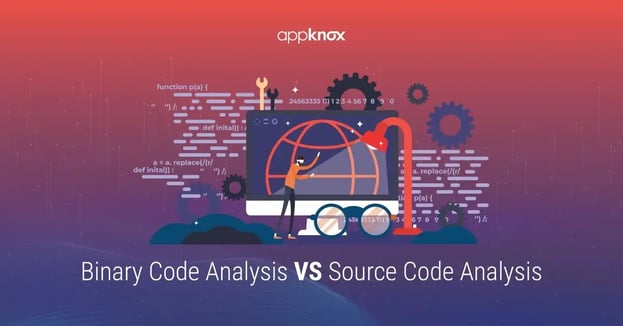
BLOG

BLOG
The discussion surrounding which is superior – Binary Code Analysis (BCA) vs Source Code Analysis (SCA) has been the most argued topic in the last few months in security communities like Dzone, Research gate and Ministry of Testing.
So we decided to put all our efforts and give our readership an in-depth understanding which will help you to choose the right framework between Binary code analysis (BCA) and Source code analysis (SCA).
Application security (Appsec) tools like SAST, DAST, MAST, APIT address unique security challenges for businesses and have a unique composition in building an end to end security suite tools. Most businesses forget that AppSec strategy also involves covering open source components since each of the binary code and source code operates differently from each other by covering a set of issues while integrating at various stages of the software development lifecycle (SDLC).
.jpg)
Binary code analysis is often referred to as binary analysis which is a threat assessment and security assessment framework at a binary level of code. Binary analysis can help development teams analyzes the raw binaries of an application that comprises a complete application, which helps to analyze the code security when there is no access to the source code.
Binary code analysis can be used to analyze third-party libraries integrated into mobile application SDK’s allowing a better understanding of how applications interact with libraries for various purposes.
Binary code is an in-depth analysis of understanding and analyzing the development of code base and components related with business logic, code quality, server status, release files and back-end business logic that’s been implemented from the initial release of the app.
Appknox performs a manual analysis to identify vulnerable patterns in the code. This is done through a complete automated engine that runs through SAST, DAST and APIT followed by a manual assessment, running a deep dive analysis of code components at every stage of the software development life cycle (SDLC).
Our Human + System approach eliminates false positives with a success rate of more than 95%, resulting in the discovery of hidden issues in the previous stable releases which needs immediate action of remediation to build safe and secure cyber resilience standards across any business.
.jpg)
Source code analysis is a code analysis framework essential to create secure Application/Software by analyzing security gaps in less time by maintaining code quality. SCA detects a range of security issues funneled with industry test cases for your application to identify open source components in a codebase,
Once a component is identified in a codebase using an automated SCA scanning you can map the component with security disclosures and industry benchmarks to check the severity of the vulnerable code components.
SCA also helps you to keep a check on various types of compliance you need to adhere to before pushing the application into the release.
Today’s applications are driven by a large set of open-source integrators like plugins, components, libraries, source code, components, frameworks to reduce the development time and ship faster to market.
In a report published by slashdot which says 96% of today’s enterprise software development process includes open source code. These components are used to expose a business to critical security issues due to improper code assessment since a large number of contributions are happening to these open source components or libraries.
Appknox uses a fully automated approach to performing security assessment in an application's binary. As per the application framework, breaking down the app's components into open-source and third-party applications is done by combining information on open-source license status.
Appknox platform enables Easy identification of vulnerabilities from CVE’s and integration with bug tracking systems like Jira and Bugzilla and provides comprehensive scans .
In order to give you a better understanding we have created the following infographic on the difference between binary SAST and source code SAST.-1.jpg?width=577&name=Appknox%20Infographic-%20Binary%20Code%20Analysis%20vs%20Source%20Code%20Analysis%20(Medium)-1.jpg)
Both binary code analysis and source code analysis can incorporate security assessment processes into the software development life cycle (SDLC).
When asked the question between BCA and SCA which one you should choose to maintain a secure development environment in your organisation?
Here are a few answers that we got from security researchers from various technology companies in the mobile security ecosystem.
